 -- Guide to Water Trail
-- Guide to Water Trail
"The man will err as long as he shall strive."
Goethe's Faust

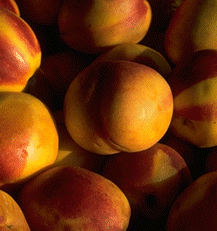 Structure
in natural experience refers to the
connection between (1) a whole and
(2) a particular within the whole, e.g.:
Structure
in natural experience refers to the
connection between (1) a whole and
(2) a particular within the whole, e.g.:
 -- interpreted on device_0 of Ridge Route
-- interpreted on device_0 of Ridge Route

 Kwik Tour starts here
Kwik Tour starts here
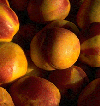
We confuse experiences, shaped by psychological processes, with things in reality.
("You say flickering dots on a television screen make you hungry? You're a funny species, Mr. Human. And your drooling dog, Pavlov, too.")


Focussing on, drawing out,
separating and sharpening
one particular experience that
emerges from a matrix of experience.
Caricature and outlining are explication.
 Explication generates instances of
whole-particular relationships.
These are events. Each
event includes a pair of elements:
a context (the matrix) and
a detail (the particular). The context-detail
pair is the germinal element in the
structural systems of these pages.
Explication generates instances of
whole-particular relationships.
These are events. Each
event includes a pair of elements:
a context (the matrix) and
a detail (the particular). The context-detail
pair is the germinal element in the
structural systems of these pages.

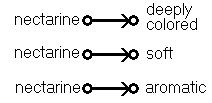 (And one might futher notice that an actual nectarine is:
(And one might futher notice that an actual nectarine is:
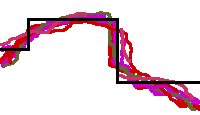
a stairwise approximation
for change

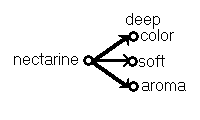
saying different
experiences are "the same"
(it's one nectarine that is deeply
colored, aromatic and soft in the hand)

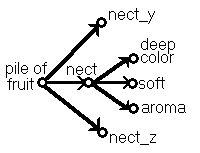
putting experiences together and getting
something new

 reflection
reflection
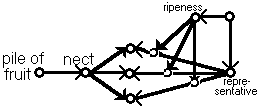
Events and structures, products of psychological processes, are projected and treated
as things in the world that can be explicated, identified and combined.
Structural development follows.

Structures can be notated in forms that, when activated by device commands, resemble human experience.



Examples of projection:

Compare to:

Many natural experiences correspond closely to states, e.g.
[ Planned presentation graphics. The images resemble those seen in introductory calculus books in graphs of "step-functions." Those graphs teach a lesson needed here: that the state-step form is an approximation that can sometimes be made as close as desired; but sometimes not. A difference is that step-functions are functions of a single variable, while states are structures.]The Way of Error


The technique is adapted for an event where locations or the relation have not been fully explicated

Forward to Stage Four